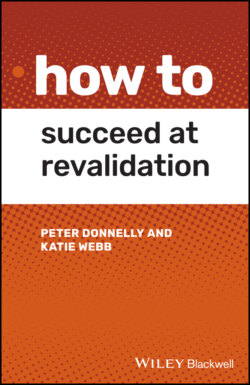Читать книгу How to Succeed at Revalidation - Peter Donnelly - Страница 17
Apothecaries
ОглавлениеBefore 1617, Apothecaries had been a part of the Grocers’ Company of the City of London. It was in that year they obtained a Royal Charter as the Society of Apothecaries. Their charter stipulated that they were responsible for the supply, compounding and sale of drugs in London, and they were distinguished from physicians and surgeons by not being called medical practitioners but “Druggists.”
In 1815 the Apothecaries Act legitimized the practice of medicine by apothecaries and authorized the Society of Apothecaries to grant a Licence of the Society of Apothecaries (LSA) Medical Practice in England. Similar to surgeons, apothecaries were trained by an apprenticeship model and not via a university‐based degree.
The LSA became an increasingly popular qualification amongst medical practitioners, with increasing numbers of physicians granted licenses, allowing them to dispense drugs to their own patients.
So, in the early nineteenth century the landscape of the medical profession in England consisted of three discrete and separately organized professions. These professions were legally defined status groups whose activities were defined by a charter devised by their relevant Royal College or Society. The three professions were ranked in a hierarchical basis with physicians above surgeons, who were perceived as superior to apothecaries. This reflected the explicit class and hierarchical system in society at that time.
Therefore, set against this background, when any reforms into medical regulations were discussed or considered, this typically triggered significant resistance amongst these separate organizations.
Outside of the elite group within the Royal Colleges, day‐to‐day medical practice started to coalesce among the three orders of practitioners. So, on a day‐to‐day basis medical care was less compartmentalized. For example, after the Apothecaries Act 1815, physicians who engaged in prescribing and dispensing drugs were required to take the LSA, irrespective of whatever other license they held. For members of the RCS, the LSA was not a legal requirement to undertake surgical practice, but it became accepted that by 1830s that surgical practitioners also held this qualification.
Structures on the ground began to change as well. It was really in the first 30 years of the nineteenth century that the term General Practitioner (GP) started to emerge, and this term referred to those who practiced medicine and surgery, whether they were licensed by their respective colleges or not.
Further evidence of the divergence away from the central elitist colleges based in London was the organic development of a wide range of supportive structures around the profession. Societies devoted to medical science, social clubs, medical book clubs and a range of medical and interest groups began to flourish. The politics evolved so that over time the majority of practitioners, whether surgical, medical or purely apothecaries, felt distant and isolated from central London and felt that their needs and requirements were not being met.
Although the passing of the Apothecaries Act was hailed as the beginning of medical reform, there were a number of unintended consequences, one of which was the merging of the identity of roles of the surgeon and the apothecary. Thus the act accelerated the process of breaking down distinctions between surgeons and apothecaries, and hence what had become in general, accepted practice on a day‐to‐day basis was enshrined in law.
This brief insight to the early nineteenth century medical world gives a sense of some of the structural and political resistances to change at that time. Despite the Medical Act of 1858, the training of doctors remained variable in quality throughout the 1800s (Peterson 1978).
One significant initiative, as a result of the Medical Act 1858, was the establishment of the forerunner to the GMC, called then the General Council of Medical Education and Registration of the UK. This body was responsible for registration and medical education across the UK.
The Medical Act 1950 established the GMC as it exists today. There remained, however, concerns with regard to the level of assurance and scrutiny. The Merrison Report (Secretary of State for Social Services 1975) made a number of recommendations including a restructuring of the disciplinary processes, particularly for doctors with mental health problems, and led to the development of greater specialization and GP registration. This in turn led to the new Medical Act in 1978. The more recent history of the evolution of medical regulation is covered in Chapter 3.
